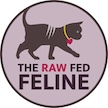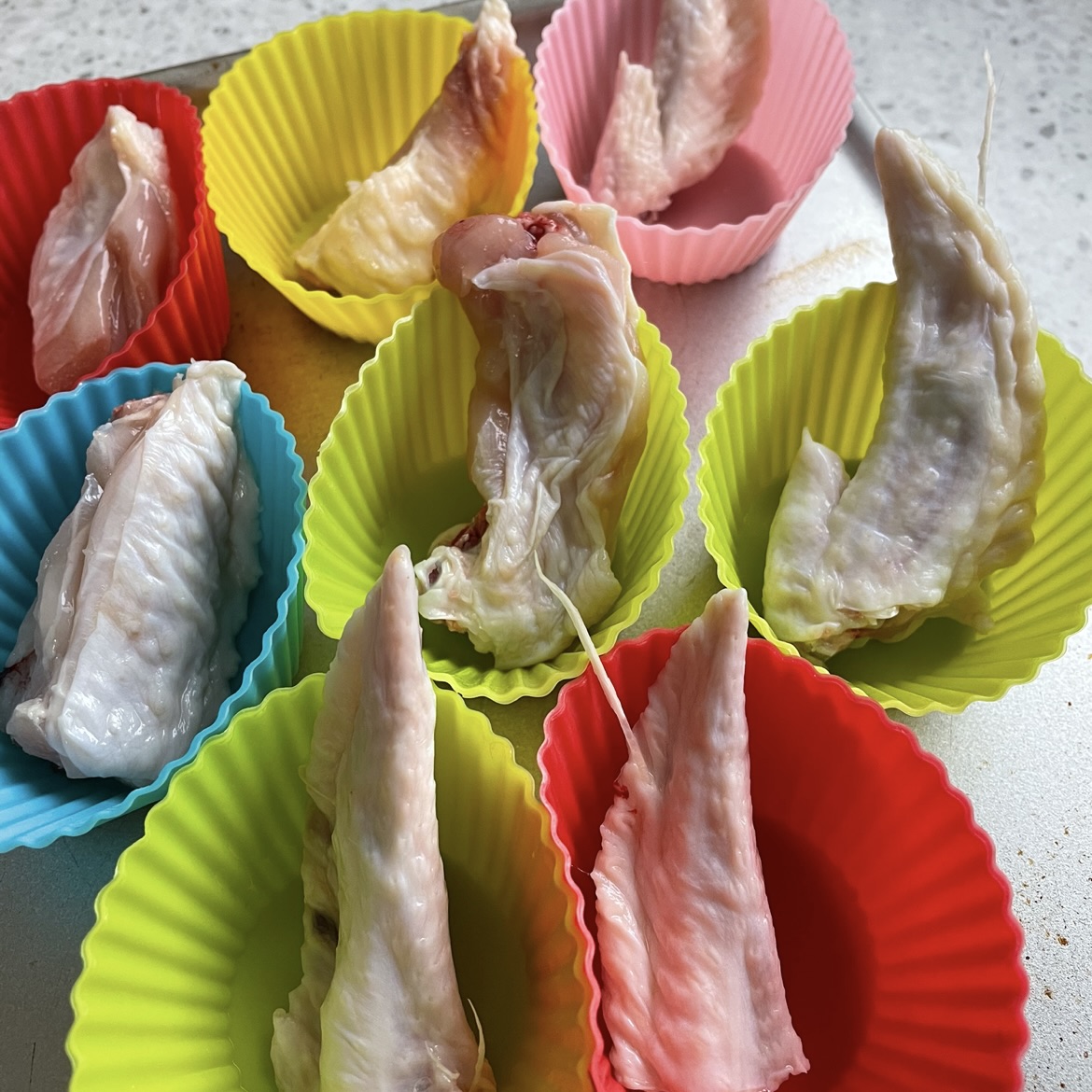It’s time to move to the second tier of the PMR Feline Food Pyramid and talk about bones and bone substitutes. Bones are an important source of the essential minerals-calcium, phosphorus, and magnesium. They also provide marrow and connective tissue. Including bones or appropriate substitutes in your cat’s diet is not optional, but required.

Feeding bones
Many people feel wary about feeding whole bones to their cat. The important things to keep in mind when feeding whole bones are size and density. Both of these things impact how appropriate the bone will be to feed whole. Chicken ribs, wingtips, and flats cut in half lengthwise, duck toes, rabbit ribs, Cornish hen and quail bones are all nice options for cats.
It’s important to note that bones are fed with meat on them. This is why you will hear the term “raw meaty bones” or rmb. Plain, stripped bones are not appropriate. Another point to be aware of is that whole bones should always be fed raw. Raw bones are soft and pliable. This is in contrast to cooked bones. The cooking process makes bones hard and brittle and far more likely to splinter. Cooked whole bones should never be fed.

how cats eat whole bones
Cats do not gnaw on bones like dogs do. They also do not chew per se. Cats use their teeth to shear off pieces of food that they are able to swallow. This can cause some alarm for cat parents when they see their cat eat whole bone. Your cat may even swallow some whole bone and then bring it back up. This is part of the learning process. They will then shear it into a smaller size and try again. You always want to supervise your cat eating whole bones, and you want to be prepared for this learning process and allow it to safely happen.
I have actually become more cautious in what whole bones I feed since feeding whole prey. The bones of cats’ natural whole prey are incredibly small and light. The bones that we are able to source are from animals much larger than cats would be able to physically hunt and eat. I suggest taking a conservative approach when choosing which bones to feed whole and keep them small. Dogs, given their range in physical size depending on breed, have far more variety when it comes to whole bones than cats do.
ground bones
There are raw food suppliers that offer ground whole bones that you can use in your cat’s diet as another option. They are typically made from ground chicken bones. You just thaw, portion, and include as needed in the diet. Or alternatively, you can invest in a grinder and grind bones at home yourself.

How much bone to feed
Figuring out how much bone to feed can be confusing at first. You have to account for both the bone content and the meat on the bone. A chicken wingtip is not 100% bone. This is a nice chart with the bone percentages of commonly fed whole bones. As noted, these percentages are approximations, not exact amounts. Let’s use an example to determine how much bone to feed. On average, cats’ whole prey consists of 6% bone. This is why we use 6% bone for our PMR ratio.
some math is required
Our example cat from the last post was 10 lbs. First, we’ll convert to ounces. (10 X 16=160). Then we’ll take the total (160) and multiply it by 3% to get the total amount of food this cat needs daily, which equals 4.8 oz. In our previous example, we calculated for a weekly batch of food, so 4.8 oz X 7 days= 33.6 oz of food weekly, which we can round up to 34 oz. For the amount of bone, we multiply 34 X 6%=2.04 or 2 oz of bone.
This next part is the extra step with bone—we have to figure out how much bone a particular raw meaty bone provides. Let’s say we are going to use chicken ribs. If we look on the chart I shared above, we see that chicken rib cages have approximately 80% bone. If we only use 2 oz of ribs, that will not actually provide 2 oz of bone. We need to determine how much ribs to feed that will give us 2 oz of bone. To do that, we take 2 (the bone amount we need) and divide that by 80% (the percentage of bone in the rmb), which gives us 2.5 oz. So, we will need to include 2.5 oz of chicken ribs to provide the needed 2 oz of bone for this cat. The 0.5 oz of the rib meat are included in the meat portion of the diet.
*I used Imperial units of measure rather than metric in this example, but the formula is the same. You would just use kg and grams rather than pounds and ounces.
Bone substitutes
Sometimes you don’t have access to appropriate bones or your cat is intolerant of chicken, so you need another option. Luckily, there are several substitutes for bone that can be used in the diet. These substitutes include MCHA, bone meal, and eggshell.
MCHA is microcrystalline calcium hydroxyapatite. It contains calcium, phosphorus, and magnesium as it is made from the freeze dried bones of young cattle. They typically come in the form of capsules. MCHA is an appropriate substitute to use with both kittens and cats.
Bone meal is another option. You have to be careful which bone meal you use as there can be concerns with lead and mercury levels. Bone meal is made from the heat treated bones from older cattle.
Eggshell is a nice option for adult and senior cats as well as for cats with kidney disease. Eggshell provides the needed calcium without adding phosphorus. Because of this, eggshell is not an appropriate bone substitute for kittens. Kittens need the phosphorus from bones, as well as the phosphorus from meat and organs, to support their growth and development. There are ground eggshell options that you can purchase or you can make it yourself.
Variety and sourcing of bones
It can be challenging to include a wide variety of whole bones in a cat’s diet due to limitations with size and density. Keep an eye out for potential options as best as you can. Your local meat market, grocery store, Asian market, and raw pet food suppliers are all possibilities. Let me know if you have any questions in the comments below.
Next up, I’ll tackle the topic of organs as we continue to move up the PMR pyramid.



2 responses to “PMR Food Pyramid: Bones and Bone Substitutes”
Why do adult cats and aenior Cat cats not need phosphorus? Should I stop serving them raw meaty bones? Also, why is bone powder not suitable for them? Is it possible that once cats grow up to be adults or senior, they no longer need phosphorus?
All cats need phosphorus and phosphorus is in many other food items than bone, including meat and organs. It can be helpful for seniors and cats with kidney disease to eat a diet that is lower in phosphorus to protect the kidneys. An easy way to reduce phosphorus in the diet is to substitute bone with eggshell. Eggshell will provide the calcium needed without adding extra phosphorus. That being said, it is not a requirement for seniors to eat a boneless diet. If your senior cat is thriving on an appropriate amount of bone in the diet, that’s great, too!